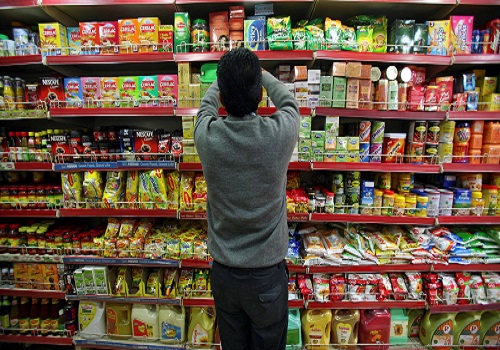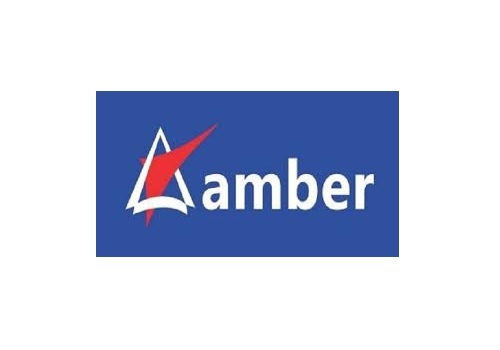Consumer Sector Update: Steady overall demand with Jewelry outlier; soft margins By Motilal Oswal Financial Services Ltd
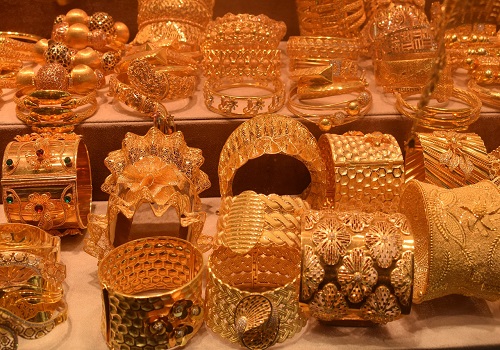
Steady overall demand with Jewelry outlier; soft margins
In our consumer coverage universe, all segments are expected to deliver revenue/EBITDA growth YoY in 1QFY26—staples +6%/+1%, paints & adhesives +3%/+2%, liquor +11%/+6%, innerwear +12%/+21%, QSR +11%/+10%, and jewelry +20%/+27%.
*Ongoing revenue trends continue: In 1QFY26, demand trends across various categories continued to mirror recent historical quarters. Staple companies are likely to experience a similar trend due to sluggish urban demand and high-cost inventory. We expect a marginal pickup in volume growth, with price hikes supporting 1Q revenue growth. We expect staples companies’ revenue growth in the range of mid-to-high single digit. Paint companies are still struggling with a muted demand environment and high competitive intensity. However, some improvement is expected in the product mix. In liquor, UNSP's P&A portfolio is expected to see subdued volume growth in 1QFY26, partly due to a high base in 1QFY25, which had benefited from high elections-led inventory stocking. UBBL is also likely to deliver low double-digit revenue growth. While the early onset of monsoon is expected to weigh on volume growth, this is likely to be offset by healthy realization growth, the benefit of price hikes in the Telangana market, and premiumization. Innerwear companies are expected to see low double-digit growth due to soft inventory and product launches. The pressure from high trade inventory has eased, and primary growth is expected to align with secondary growth. The demand environment for QSR companies remained muted in 1QFY26. While demand sentiments remained healthy in Apr’25, they remained weak in May’25 and the second half of Jun’25. The performance of the dine-in channel and the revenue gap between dine-in and delivery will be key monitorables during the quarter. Jewelry demand was healthy in April but has since moderated due to the sharp rise in gold prices.
* Operating margin to remain subdued: Despite moderating prices of key raw materials, gross margins for most consumer companies are expected to remain subdued due to high-cost RM inventory. Moreover, staple companies have increased promotional spending to drive demand growth, further pressuring EBITDA margins. While QSR and paint companies are likely to experience EBITDA margin contraction, liquor (ex-UNSP) and innerwear companies are expected to report margin expansion due to softer raw material costs and an improved product mix. Jewelry companies are expected to face margin pressure due to a shift toward more franchise-driven store expansion, slower studded jewelry growth, and high gold inflation. SSSG is expected in low double digits to mid-teens, primarily driven by pricing growth.
* Outperformers and under-performers: Among our coverage companies, MRCO, JUBI, PAGE, Kalyan Jewellers, and PNG are expected to be outliers in 1QFY26, whereas Asian Paints, Indigo Paints, Emami, Dabur, UNSP, and Devyani/Sapphire will likely be underperformers.
* Outlook: While the slowdown has continued across consumer segments, demand trends are expected to improve gradually, supported by a healthy monsoon outlook, income tax benefits, interest rate cuts, and a gradual improvement in the macro environment. Our top picks are Marico, PN Gadgil, Radico Khaitan, and RBA.
Segment-wise performance
* Staples: No material uptick in demand trends is expected in 1QFY26 as they continue to mirror recent historical quarters. Demand remained impacted by weakness in urban consumption, while rural markets are recovering gradually. Despite RM softening, the benefits should start to become visible from 2QFY26 onwards, as companies are still carrying high-cost RM inventory. Moreover, the early onset of monsoon has adversely impacted summer-led products, HI, and out-of-home portfolios. Volume growth is likely to remain in the low- to midsingle digits, while price hikes realized in 1QFY26 should aid overall revenue growth. We model gross margin contraction of 170bp YoY and EBITDA margin contraction of 130bp on a YoY basis due to high inventory costs (tea, wheat, palm oil, and edible oils) and negative operating leverage. For staple companies under our coverage, we expect sales/EBITDA/PAT growth of 6%/1%/2% in 1QFY26.
* Paint & adhesives: Revenue growth for paint companies is expected to remain weak in 1QFY26, with no material sequential uptick as demand conditions continue to remain muted. Rising competitive intensity is also putting pressure on growth. We believe the product mix will play a key role in driving revenue growth. We still build in a +600bp gap between volume and revenue growth due to an adverse product mix. EBITDA margins are likely to remain under pressure due to higher marketing spends and the impact of negative operating leverage. We build in 3% sales and 2% EBITDA YoY growth for paint companies under our coverage, while APAT is projected to remain flat YoY in 1QFY26.
* Liquor: UNSP’s P&A portfolio is expected to witness subdued volume growth in 1QFY26, partly due to a high base in 1QFY25, which had benefited from high elections-led inventory stocking. EBITDA margin is expected to contract YoY, driven by higher A&P spends and operating deleverage during the quarter. The impact of Maharashtra’s import duty changes is expected to become visible from 2QFY26 onwards. However, companies expect that the adverse impact in Maharashtra can be offset by improved performance in other states as well as mitigation effects within Maharashtra itself. For RDCK, we expect the strong volume trend to sustain. Premiumization trends are expected to remain strong, with growth driven across segments. We expect the company to expand its operating margin, supported by a favorable mix and operating leverage. For UBBL, while we expect the early onset of monsoon to weigh on volume growth, this should be offset by healthy realization growth, reflecting the full-quarter benefit of price hikes (effective from mid-Feb) in the Telangana market and the ongoing premiumization drive, leading to low double-digit revenue growth. Price hikes should support gross margins, while slow volume growth may not fully translate into operating margin improvement. We expect sales/EBITDA/PAT growth of 11%/6%/10% for our coverage companies in 1QFY26.
* Innerwear: We expect low double-digit revenue growth for Page Industries in 1QFY26, driven by softer inventory, product launches, and successful placements across alternate channels. Weak urban consumption remains a headwind, but normalized trade inventory should enable better primary growth. Primary and secondary sales are now expected to be aligned, reversing the trend observed over the past few quarters. We expect sales/EBITDA/PAT growth of 12%/21%/22% for Page Industries.
* QSR: The demand environment for QSR companies remained muted in 1QFY26. While demand sentiments were healthy in Apr’25, they were mixed in May’25 (due to factors such as the impact of war) and showed limited recovery in Jun’25. However, overall demand has still not seen a meaningful recovery, and companies’ own initiatives have played a bigger role in sustaining a healthy trend. Jubilant appears strong within the pack, with sustained outperformance in delivery. Among dine-in players, we believe RBA will be the outperformer. With weak underlying growth, most companies are expected to face margin pressure, which will weigh on restaurant-level and EBITDA margins for most brands. The performance of the dine-in channel and the revenue gap between dine-in and delivery will be key monitorables during the quarter. Enhancing the menu and rolling out activation drives for dine-in could be crucial for improving footfall/orders going forward. We expect sales/EBITDA growth of 11%/10%, while APAT is likely to decline 17% for our coverage QSR companies in 1QFY26.
* Jewelry: In 1QFY26, gold prices surged ~30-35% YoY and ~15% QoQ, breaching the INR100k mark (per 10gm) in the retail market, driven by ongoing geopolitical tensions. This sharp and rapid increase has led to consumer budget constraints, with many customers choosing to delay purchases in anticipation of a price correction or stabilization, leading to demand softness in 1QFY26. SSSG is expected to grow in low-double digits to mid-teens, primarily driven by pricing growth. Finance costs are expected to stabilize as the GML rate has normalized, following a spike in 4QFY25 due to the imposition of US tariffs. We expect sales/EBITDA/PAT growth of 20%/27%/35% for our coverage jewelry companies in 1QFY26.
Existing inventory postpones the benefits from cooling input costs
* Commodities such as tea, coffee, and palm oil, which were inflationary in recent quarters, have started to ease in Q1FY26. Despite this moderation in input costs, the benefit to company margins is likely to be delayed, as most companies continued to utilize high-cost inventory in 1QFY26, keeping gross margins under pressure. Benefits from cooling RM pressure are likely to be realized 2QFY26 onwards, which should support most FMCG companies such as Dabur, HUL, Nestlé, Britannia, Marico, and Tata Consumer. Similarly, non-agricultural commodities, including crude oil, its derivatives, and VAM prices, have continued to ease. However, select commodities such as gold and copra continue to experience inflationary pressures.
* Agricultural commodities: Wheat prices increased 4% YoY but declined 11% QoQ. Barley prices surged 10% YoY but dipped 5% QoQ, likely impacting companies like UBBL and Nestlé. Sugar prices increased 4% YoY but remained flat QoQ. Coffee prices increased 6% YoY and 2% QoQ, while Cocoa bean prices have started to ease, declining 1% YoY and 3% QoQ, providing some relief for companies like Nestlé and HUL. Copra prices surged 70% YoY and 13% QoQ, while palm oil prices increased 1% YoY but declined 14% QoQ.
* Non-agricultural commodities: Given geopolitical issues, Crude oil prices remained volatile in 1QFY26 but declined 20% YoY and 10% QoQ. Other commodities like TiO2 and TiO2 (China) continue to show a downward trend. VAM (China) prices remained range-bound, correcting mere 1% both YoY and QoQ. In contrast, gold prices surged 32% YoY and 14% QoQ, putting pressure on the margins of jewelry companies.
* Companies remain focused on normalizing the gap between volume and value growth while prioritizing a strategic balance between revenue growth and margin expansion amid evolving market dynamics. This approach aims to effectively navigate cost pressures while maintaining competitive positioning.
For More Research Reports : Click Here
For More Motilal Oswal Securities Ltd Disclaimer
http://www.motilaloswal.com/MOSLdisclaimer/disclaimer.html
SEBI Registration number is INH000000412





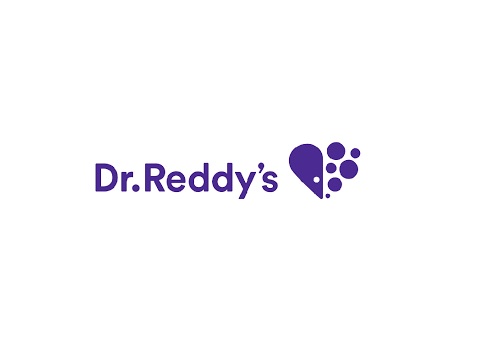



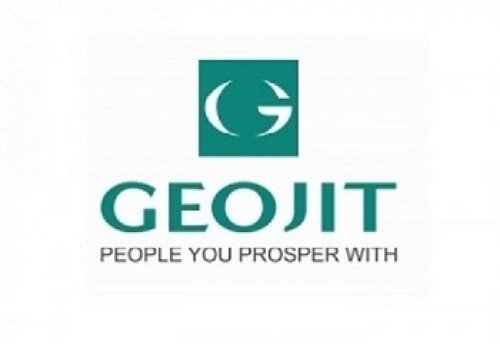
More News

Automobiles Sector Update : Auto Expo 2025 OEMs focus on clean fuels By Motilal Oswal Financ...











